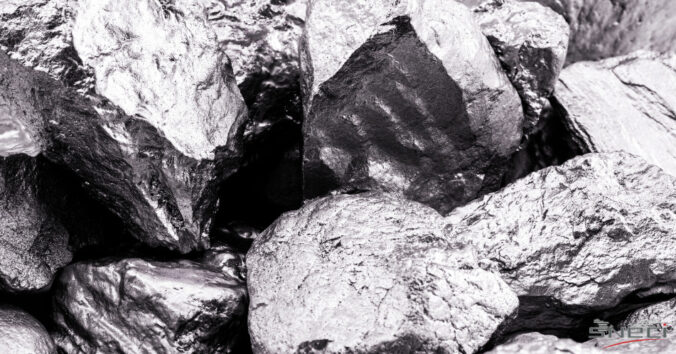Are rare earths an issue in the production of EV batteries?

The use of “rare earths” in batteries is the subject of much debate, but are these “rare earths” really an issue for the production of batteries in the future in the context of electric vehicles and the end of the thermal era?
Some people think that their use is problematic, particularly because of their extraction, which is often not environmentally responsible. Moreover, the conditions of extraction are so polluting that China holds nearly 80% of the world market. Moreover, refining them is extremely polluting. It releases toxic and even radioactive waste.
Let us discover together what rare earths are and what impact they will have on tomorrow’s mobility
Definition of “rare earths”:
Let us start with a brief definition of “rare earths”. The name “rare earths” comes from the fact that they were discovered at the end of the 18th century in ores (hence the name “earths”), which were not very common at that time and difficult to separate from each other with the techniques used at the time.
Rare earths do not refer to earths but to 17 metals: scandium, yttrium, and the fifteen lanthanides (Lanthanum, Cerium, Praseodymium, Neodymium, Promethium, Samarium, Europium, Gadolinium, Terbium, Dysprosium, Holmium, Erbium, Thulium, Ytterbium, and Lutecium).
Contrary to their name of “rare earths”, these metals rather abundant in the earth’s crust remains in low concentration in the ores, this is particularly the case of lanthanum, neodymium, cerium which represent 90% of the production of rare earths in the world. The most used are cerium (40.2% of the rare earths consumed), lanthanum (27.8%) and neodymium (17.6%).
Contrary to what their name might suggest, the abundance of rare earths in the earth’s crust is much greater than that of many other commonly used metals: their concentration is three times greater than that of copper and twice that of zinc, two metals that are widely used in industry and present in many commonly used goods.
Rare earths are for example 200 times more abundant on earth than gold or platinum.
In other words, the exploitable reserves of rare earths are much less critical than those of many other strategic metals. Note that some other metals such as lithium and cobalt used in lithium-ion batteries are not rare earths.
Where can you find “rare earths”?
In reality, what makes them rare is the much-localized distribution of economically exploitable deposits, since the current quasi-monopoly concerns China for their extraction and transformation. Indeed, China holds about 90% of the world’s production of rare earths.
Historically, the first rare earth mines in the 1940s were located in Brazil and India.
After the discovery in the 1950s of large deposits in South Africa, this country was the main producer until the early 1970s when new mines opened in the United States (Mountain Pass deposit) and Australia in particular.
Then, in the 1980s, China began to produce rare earths and dumped prices, which eventually led to the closure of the world’s other main operations due to lack of profitability.
In the early 2000s, China had a near monopoly of production with a market share of nearly 90%. Then they decided to reduce their export quotas, which caused a rise in prices and the opening or reopening of new mines in the world, in the United States (California), Australia, Sweden, Brazil, Vietnam, Russia…
In 2017-2018, one of the richest deposits on the planet, the Gakara deposit in Burundi, began operating.
China, although still the world’s largest producer of rare earths, does not hold the majority of the reserves only 30 to 40% of them according to estimates. Brazil (with estimated reserves of 22 million tons, more than half of China’s), India, the United States, Canada, Greenland, Russia, Australia, South Africa, Vietnam, Thailand and several countries in East Africa, among others, have significant deposits.
In 2018, the United States Geological Survey (USGS) estimated that the world’s reserves of rare earth oxides amounted to 130 million tons for an annual production, that year, of 170,000 tons.
In short, rare earths are not rare at all, the world’s reserves are large, well distributed in the 5 continents and no shortage is to be feared for a long time.
If China holds a majority share of the production, it is only because it was dumping prices. But the growth in demand has started to reverse the trend and many new mines are opening all over the world.
What for are used “rare earths”?
Rare earths are mainly used in the following applications:
- Permanent magnets (used to reduce the volume and weight of electric motors and generators) ;
- Catalysis (catalytic converters for cars, petroleum cracking…);
- Glass polishing (especially for screens);
- Some batteries;
- Some metallurgical alloys;
- Glass and ceramics industries (coloring, decoloring…);
- Luminophores (lamps, screens…) ;
- Power lasers;
- But also in medical imaging, nuclear energy, defense…
If, at the beginning of their exploitation, rare earths were used to manufacture bricks, refractory alloys and dyes for terracotta objects, the production took off from the 60s with their use in cathode ray tubes of color televisions.
Nowadays, their electronic, magnetic, catalytic, optical, luminescent and mechanical properties make them “gold mines” for the technological industry.
They can be found in flat screens, energy-saving lamps, LEDs, lasers, radar, computer hard drives, jet engine fins, heat pumps and air conditioning systems, refrigeration applications, some photovoltaic panels, glass polishing, some types of electric motors, as catalysts in the oil refining and petrochemical industry and in catalytic converters for vehicles with internal combustion engines… in short, in a great many industrial applications.
For example, 26% of rare earths are used worldwide as catalysts in the petroleum industry and in catalytic converters for internal combustion engine cars.
About 20 to 23% are used in the manufacture of permanent magnets for electric motors. The advantage of rare earth magnets is that the volume and weight required for equivalent magnetic performance is much lower than that of magnets made with other technologies.
Moreover, they allow an interesting miniaturization for electric micromotors in cars (window regulators, rear-view mirrors, adjustable seats,…), computers, hard disk reading heads, etc.
Rare earths and EV :
15 years ago, the first hybrid vehicles, notably the Toyota Prius and the Honda, were equipped with NiMH (Nickel Metal Hydride) batteries whose negative electrode (anode) was made of a lanthanum-pentanickel alloy (LaNi5).
These batteries in the first generation of hybrid vehicles contained about ten kilos of lanthanum, which is a rare earth.
However, today this battery technology has been replaced by the family of lithium-ion (Li-ion) batteries with much higher performance.
While some Toyota hybrids sold in Europe are still equipped with NiMH batteries, the vast majority of hybrid and electric vehicles today are equipped with Li-ion batteries… which do not contain rare earths.
Of course, they contain lithium, cobalt and nickel, but as mentioned above, these metals are not rare earths and do not pose the same problems.
“Rare earths do not enter, or only in very small quantities (possibly as an additive), in the composition of Lithium-ion (Li-ion), sodium-sulfur (NaS) and lead-acid (PbA) batteries, which are the most common. Only nickel-metal hydride (NiMH) batteries include a rare earth alloy at the cathode. These batteries have been used mainly in hybrid vehicles and in portable electrical equipment, but their use for renewable energy storage will remain very marginal, mainly because of their high cost compared to Li-ion batteries, whose characteristics and performance are better suited to this use,” says ADEME.
SNECI and the operational support of automotive manufacturers.
Our various solutions for international business development and industrial performance enable us to support suppliers and manufacturers in different areas of expertise:
- In industrial performance, we provide our clients with the means to achieve operational excellence, by supporting them in their industrial projects or by training and coaching their teams. We also have in-depth expertise in assessing industrial companies and implementing best practices in quality, purchasing and logistics.
- In business development, our team partners with suppliers expanding into new regions or seeking to acquire new customers by acting as an extension of their sales, project, quality and logistics teams. We also advise companies on their partnership and acquisition strategy.
If you would like our team of over 70 years of experience in the automotive industry, with 450 experts worldwide, please contact Laura by email at laura@sneci.com or directly via the contact tab on our website.





